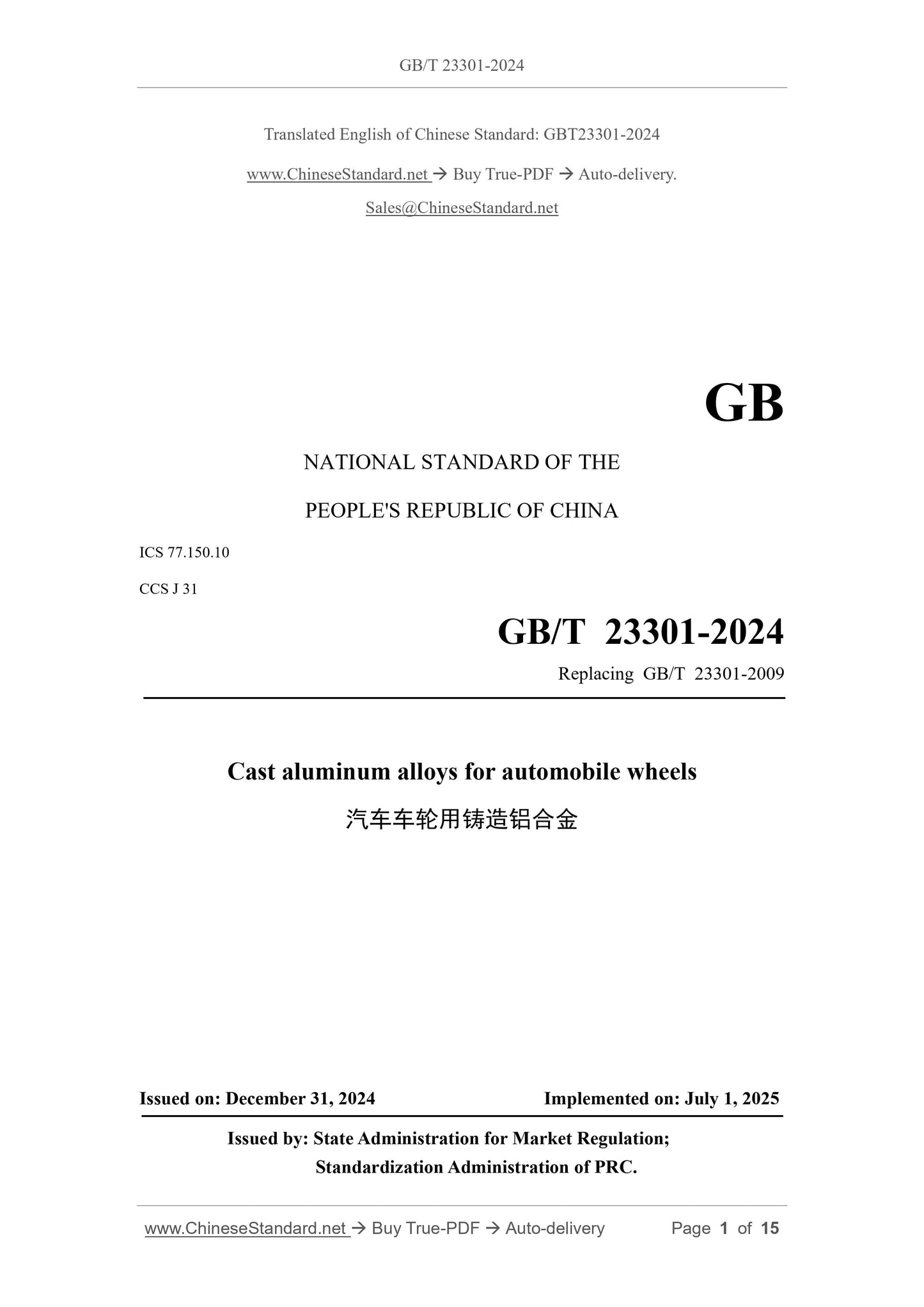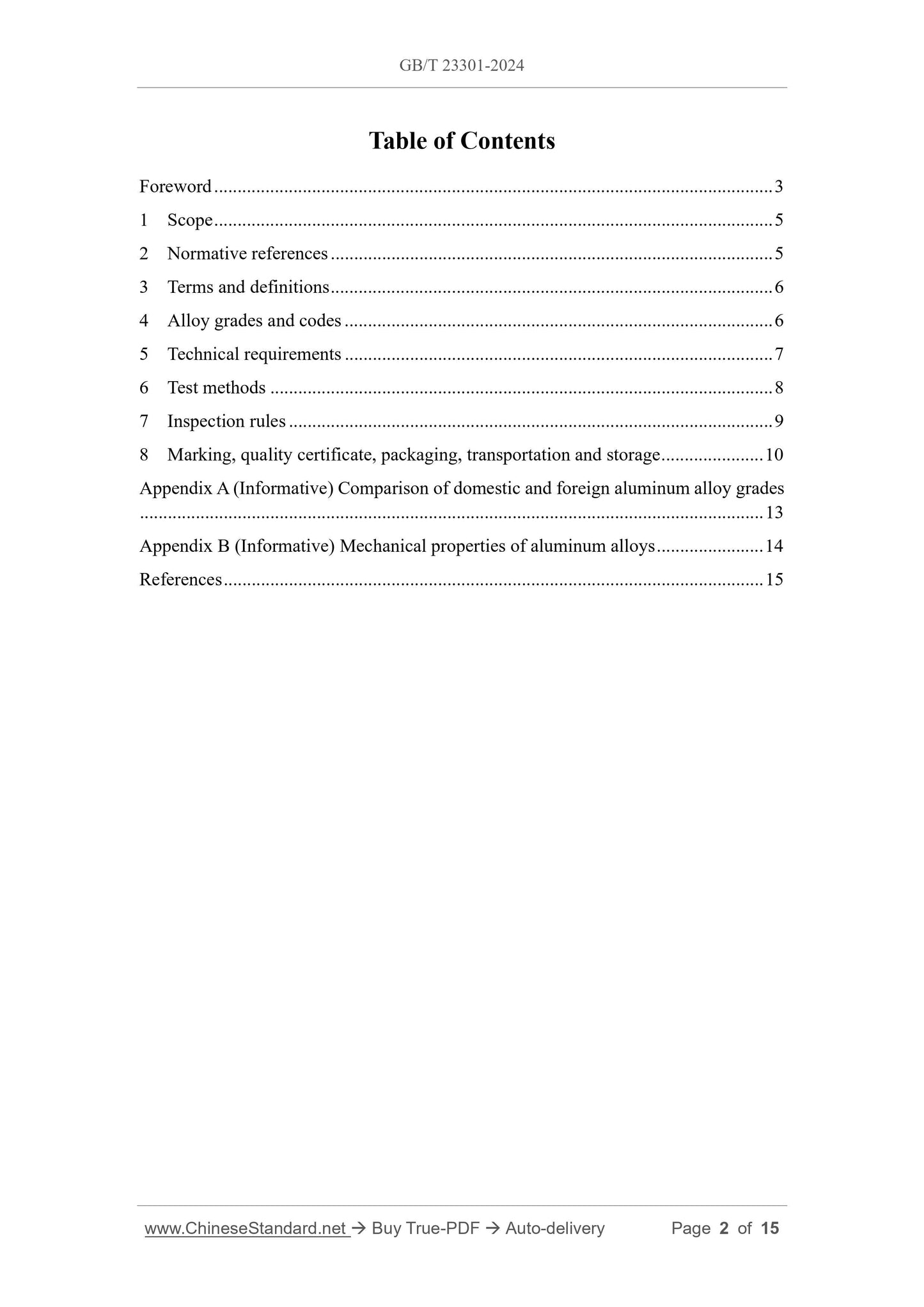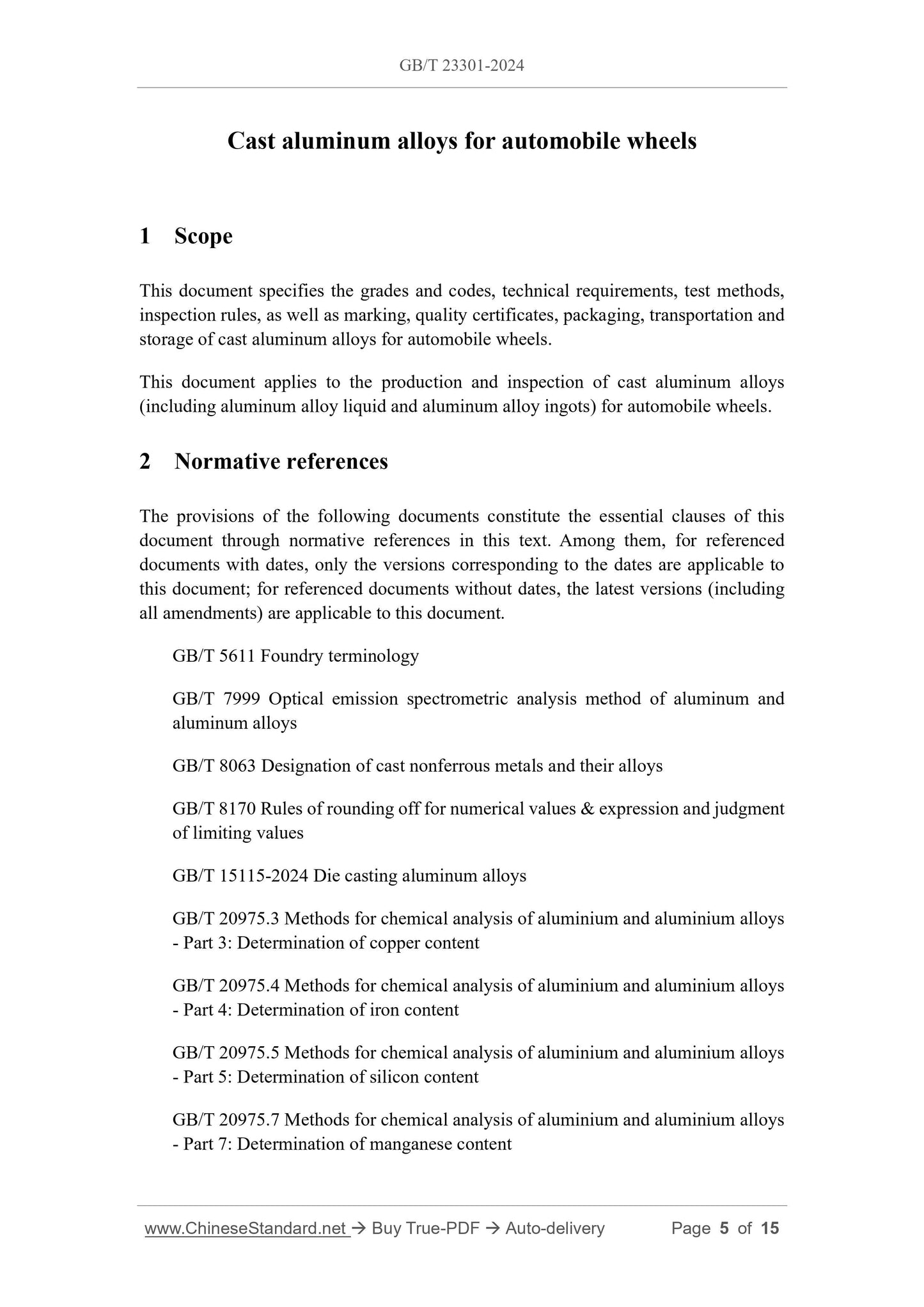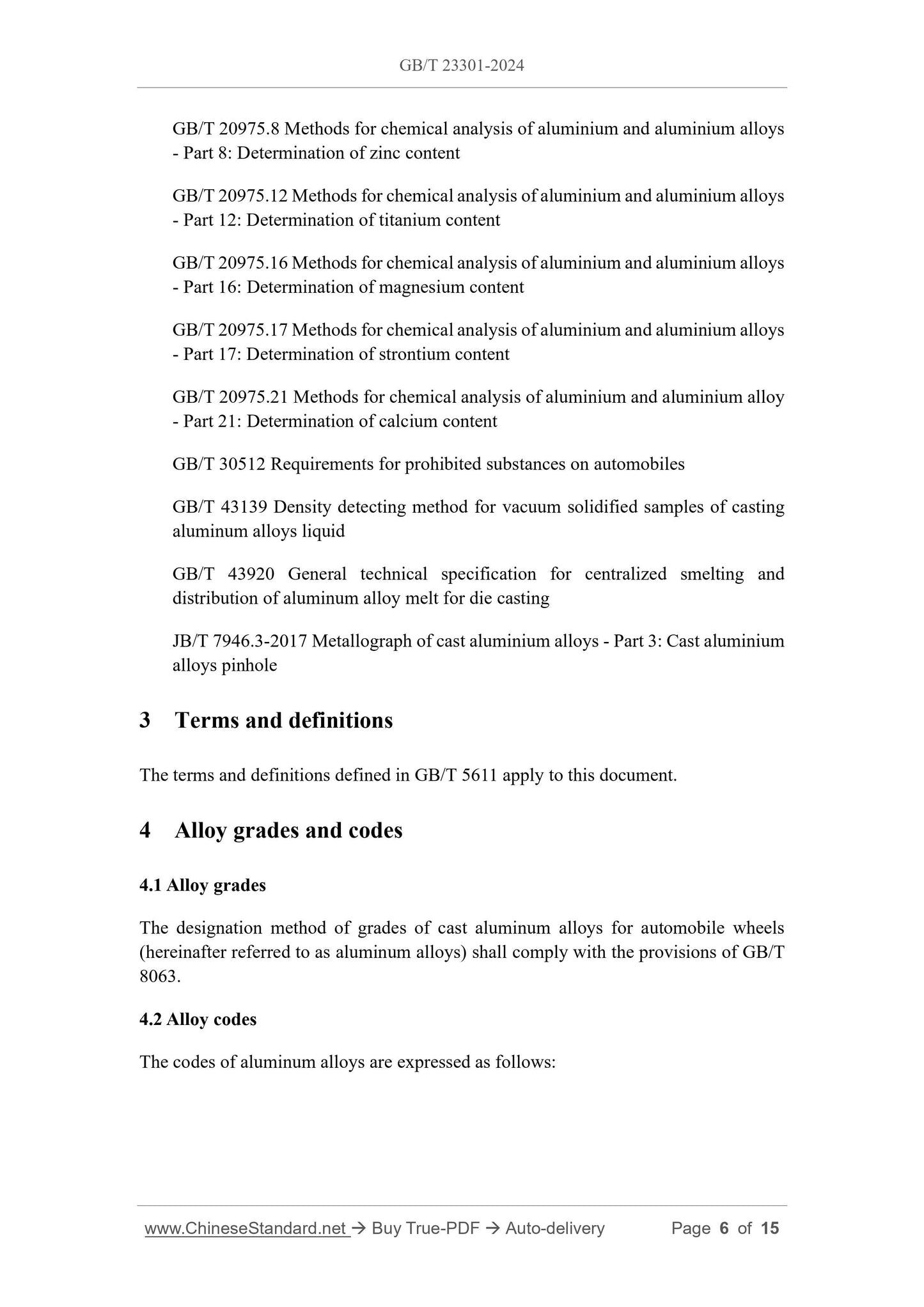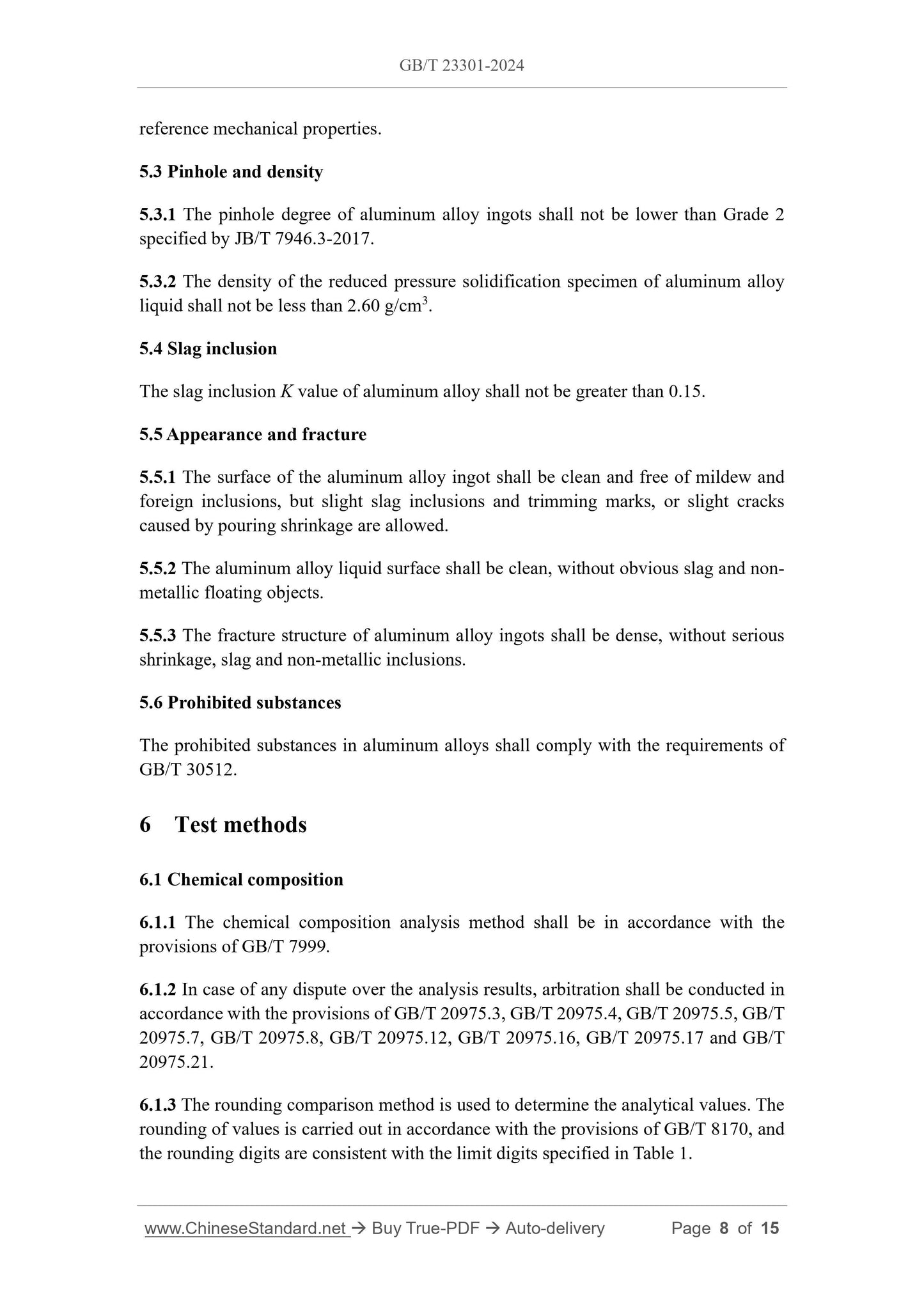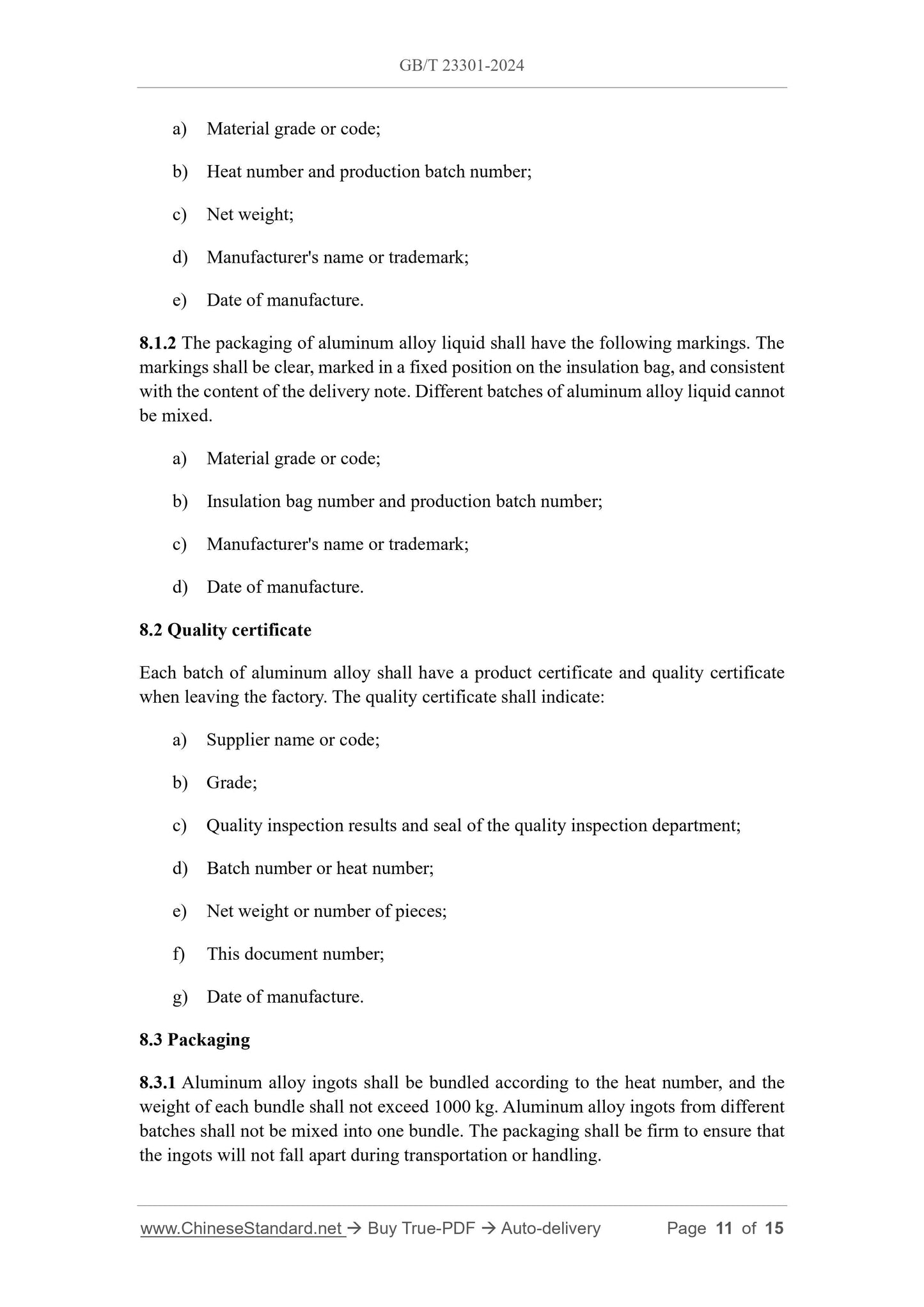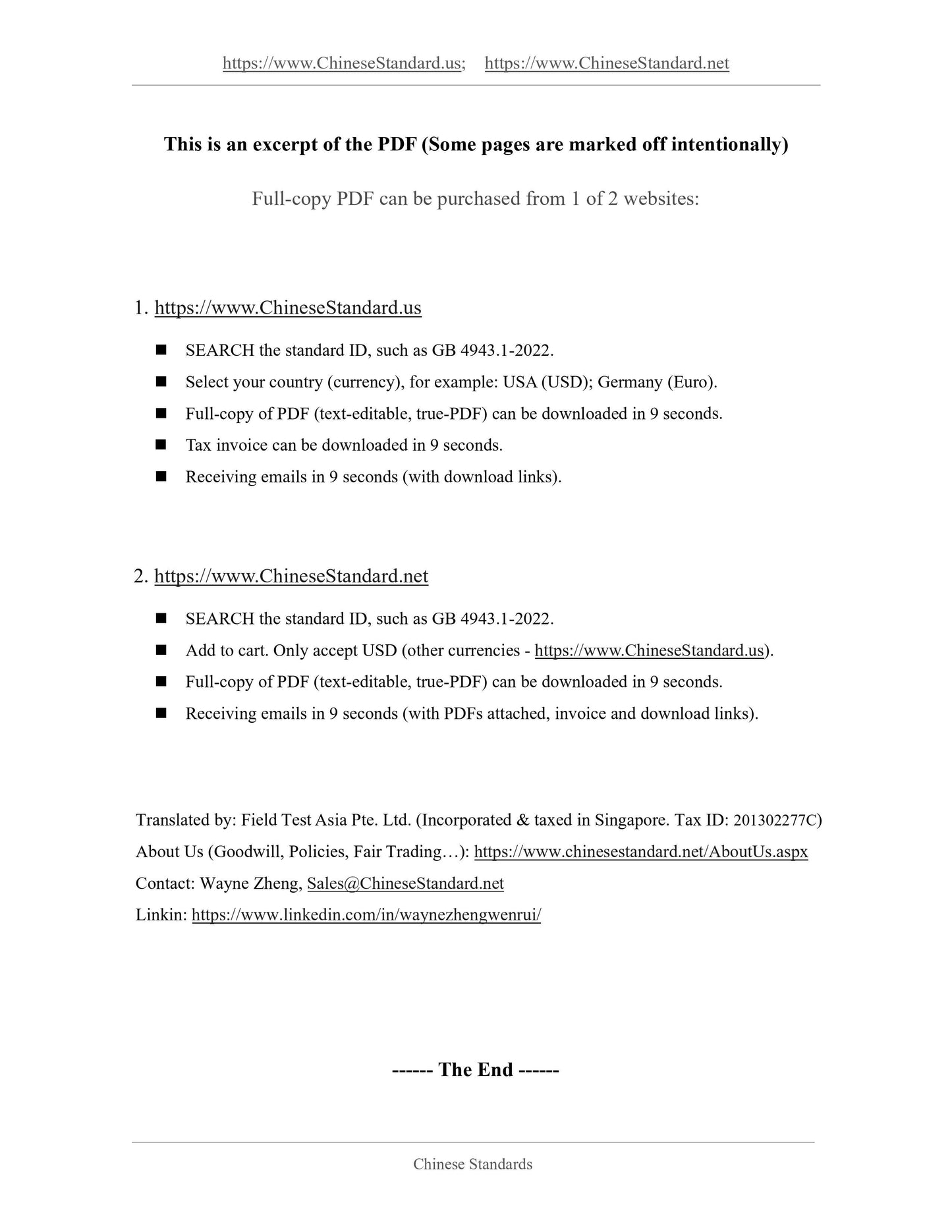1
/
of
7
www.ChineseStandard.us -- Field Test Asia Pte. Ltd.
GB/T 23301-2024 English PDF (GB/T23301-2024)
GB/T 23301-2024 English PDF (GB/T23301-2024)
Regular price
$275.00
Regular price
Sale price
$275.00
Unit price
/
per
Shipping calculated at checkout.
Couldn't load pickup availability
GB/T 23301-2024: Cast aluminum alloys for automobile wheels
Delivery: 9 seconds. Download (and Email) true-PDF + Invoice.Get Quotation: Click GB/T 23301-2024 (Self-service in 1-minute)
Newer / historical versions: GB/T 23301-2024
Preview True-PDF
Scope
This document specifies the grades and codes, technical requirements, test methods,inspection rules, as well as marking, quality certificates, packaging, transportation and
storage of cast aluminum alloys for automobile wheels.
This document applies to the production and inspection of cast aluminum alloys
(including aluminum alloy liquid and aluminum alloy ingots) for automobile wheels.
Basic Data
| Standard ID | GB/T 23301-2024 (GB/T23301-2024) |
| Description (Translated English) | Cast aluminum alloys for automobile wheels |
| Sector / Industry | National Standard (Recommended) |
| Classification of Chinese Standard | J31 |
| Classification of International Standard | 77.150.10 |
| Word Count Estimation | 14,162 |
| Date of Issue | 2024-12-31 |
| Date of Implementation | 2025-07-01 |
| Older Standard (superseded by this standard) | GB/T 23301-2009 |
| Issuing agency(ies) | State Administration for Market Regulation, China National Standardization Administration |
Share
